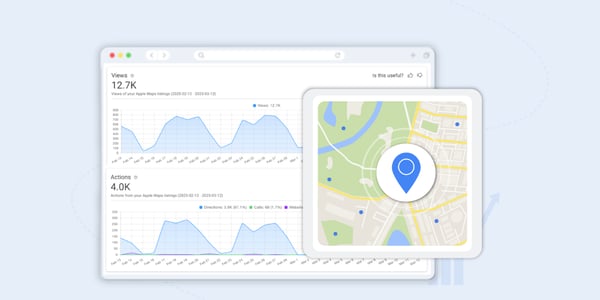The first step towards maximising your multi-location marketing efforts is to centralise all of your listings. Without a location structure, each location you manage operates independently. With a location structure in place, each location becomes a part of your brand network, which means that success at one of your locations means success at all of them.
This structure simplifies updating between locations and ensures brand consistency across listings and platforms: the logo on one of your locations on Google will match the logo on another of your locations' Facebook pages.
We compared the year's data before we helped them arrange their listings to a year's data after we helped them structure their listings for five of our customers, each of whom is a leading Scandinavian grocery store chain. Every single Google metric increased:

Discovery searches are a particularly beneficial form of search result. A Google Discovery search occurs when someone is looking for a type of service rather than a supplier, such as "grocery store near me." These searchers are very driven to buy something, but they haven't determined where to get it yet. Ensuring you appear in these searches means you're offering this undecided customer the opportunity to choose you.
Become the Manager of All of Your Listings
To set the framework in place, ensure that you are the manager of all of your listings. This includes making new listings for any places that don't already have them, as well as claiming your brand's listings that you don't control, so you don't miss out on the free publicity that comes with customers checking in at your locations.
Setting up your location structure may appear to be a daunting job, especially for larger companies with multiple locations, but there are services available that will assist you in both setting up your locations and keeping the information current and up to date, such as PinMeTo Listings.


